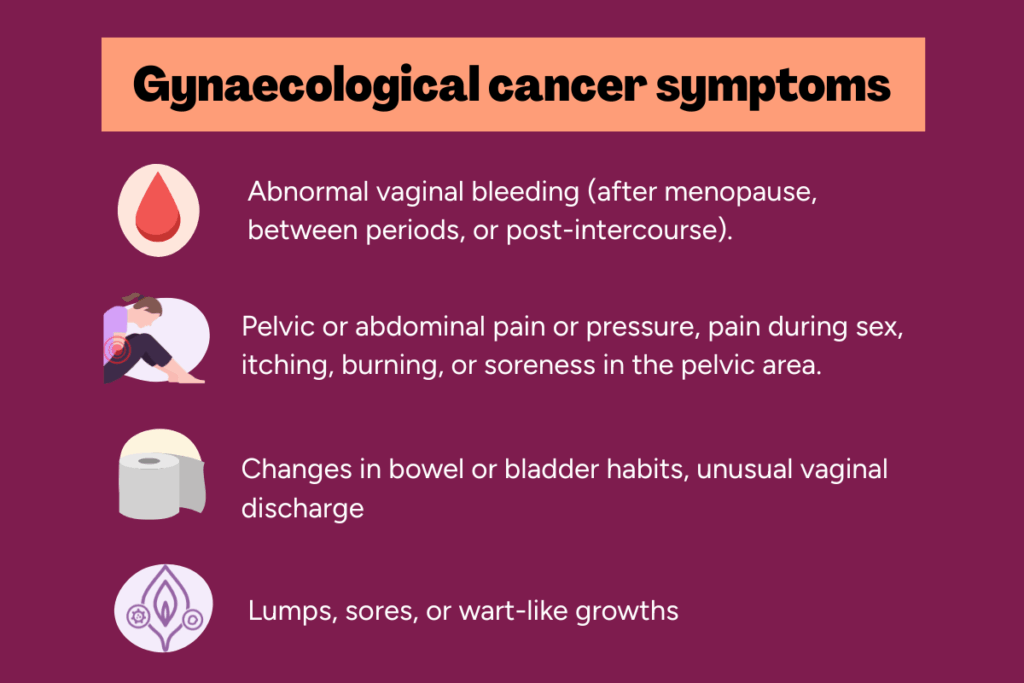Gynaecological Cancer Awareness Month
September is dedicated to raising awareness about cancers of the female reproductive system. According to Australian Gynaecological Cancer Foundation (AGCF) an Australian woman is diagnosed with a gynae cancer every 1.3 hours.
What is gynaecological cancer?
Gynaecological cancers are those that begin in a woman’s reproductive organs and include cancers of the:
Cervix
Uterus (endometrial)
Ovaries
Vagina
Vulva
Fallopian tubes
These cancers occur when abnormal cells grow uncontrollably in these areas. Each type has its own risk factors, symptoms, and treatment options.
Symptoms
Symptoms vary depending on the type and stage of cancer, but common signs include:

For a full list of symptoms please visit the Cancer Australia What are the symptoms of gynaecological cancers webpage
If you notice any of these symptoms, it’s important to speak with your GP promptly.
Detection and screening
Cervical cancer is the only gynaecological cancer with a national screening program in Australia:
National Cervical Screening Program: Women aged 25–74 are invited to screen every 5 years using an HPV test.
HPV Vaccine: Offered free to girls and boys aged 12–13 through schools. It protects against the types of HPV that cause most cervical cancers.
Unfortunately, there are no routine screening tests for other gynaecological cancers like ovarian or uterine cancer, making symptom awareness and early medical consultation vital.
Further information can be found on the Cancer Australia screening webpage.
Treatment options
Treatment is tailored to the individual depending on the type of cancer, its stage and severity of symptoms but it may include:
- Surgery: Often the first step to remove the tumour and assess its spread.
- Radiation therapy
- Chemotherapy
- Targeted therapy (e.g. PARP inhibitors, bevacizumab)
- Immunotherapy (e.g. pembrolizumab)
Care is typically provided by a multidisciplinary team including oncologists, surgeons, nurses, and allied health professionals. Clinical trials may also be available for eligible patients. Further information can be found on the Cancer Australia treatment options webpage.
Support and resources
Counterpart – Peer Support Volunteers Talk to a woman who has experienced cancer and has been trained to listen and support others experiencing cancer.
Australian Gynaecological Cancer Foundation (AGCF) Provides information and resources, funds vital research, raises awareness, and advocates for better detection and treatment of all gynaecological cancers across Australia.
Counterpart – cancer types Visit the different cancer sections of this page for links to further information and resources.





